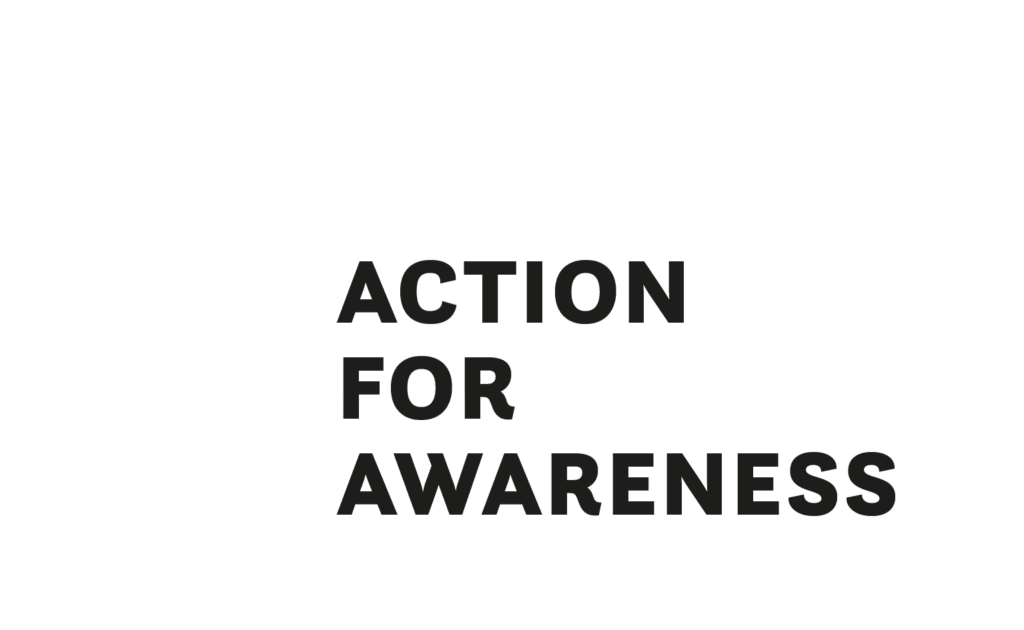Sexual Violence & Consent
What is sexual violence?
It's sex without consent
Sexual violence is '“any violence, physical or psychological, carried out through sexual means or by targeting sexuality. It includes sexual harassment, sexual assault, rape and other forms of sexual misconduct.”
A sexual act, remark, behavior, or attitude is violent if sexual consent has not been obtained beforehand.
Quelle: Bureau de coopération interuniversitaire, 2017. Sexual Harassment and Violence in the University Context. p. 12
It's condoned by the rape culture
The Rape culture describes "a culture in which dominant ideas, social practices, media images and societal institutions implicitly or explicitly condone sexual assault by normalizing or trivializing sexual violence and by blaming survivors for their own abuse.” (p. 14)
The social standards carried in the rape culture are illustrated by
- “systematically calling into question the truth of the [survivors’] claims;
- holding [survivors] accountable for the violence they suffered;
- causing survivors to feel guilty by making them bear the weight of the negative impact of reporting the alleged aggressor[…];
- trivialization or eroticization of sexual violence by the media.” (p.14)
Some of those social standards were exposed in a study conducted at the University of Ottawa, where “a higher proportion of men believe that accusations of rape are used as revenge against men, or that women are partially responsible when they are in a high-risk situation, or when they are raped while in an inebriated state.” (p.14)
Here are 10 facts which invalidate beliefs carried through the rape culture: (pp.17-19)
- Survivors: “Anybody can be a survivor of sexual violence, regardless of their socioeconomic status, the way they dress, or the places they frequent. 1 woman in 3 and 1 man in 6 will be a victim of sexual violence during their lifetime.”
- Perpetrators: “The great majority (approximately 80%) of incidents of sexual violence are committed by someone known to the [survivor]: an acquaintance, colleague, date, spouse, friend, or family member.”
- Time and paces: “Sexual violence can be committed at any time of the day or night, and most often occurs in private places, such as the home of the [perpetrator] or the [survivor].”
- Behavior and clothing: “Everybody has the right to refuse sexual activity, regardless of how they are dressed or how they behave.”
- Women: “A woman’s behaviour (whether hitchhiking, going out late at night, walking in a poorly lit street, taking drugs or alcohol, or agreeing to accompany a man) is never an invitation to be sexually assaulted. Women do not seek to be assaulted, humiliated or attacked.”
- Means: “Most sexual violence is committed out of the public eye or perpetrated subtly, and, most of the time, using manipulation or threat rather than physical violence.”
- Resisting: “A number of factors may make it difficult or impossible to resist an agressor: fear of reprisals, surprise, an altered state as a result of substance use, or socialization that favours passivity in the face of aggression.”
- Reacting: A [survivor's] reaction is no indication of the seriousness of the incidents they have suffered or the extent of the consequences for them.”
- Reporting: “Only 10% of [survivors] report incidents of sexual violence for a number of reasons: fear of not being believed and of being judged; fear of the reaction of those around them; possible reprisals; the challenges involved in the reporting process, etc.”
- False accusations: "Unfounded complaints of sexual violence are not more numerous than those of other crimes.”
Source: Bureau de coopération interuniversitaire, 2017. Sexual Harassment and Violence in the University Context.
It's a societal problem
Sexual violence has its roots in very complex structures in our society. Adopting and promoting certain values can challenge those societal structures in university environments. Here are three values which promote safe communities free of sexual violence:
- Respect for fundamental human rights: “Every person should have a sense of safety on university campuses and be able to attend and participate with confidence and without fear for [their] physical or psychological wellbeing.”
- Equality between men and women: “Sexual violence is rooted in the abuse of power and experienced primarily by women and children. Sexual violence can take form through systemic discrimination and sexist attitudes, as misogynist remarks, vexatious and unwanted sexually related acts or sexual assault.”
- Respect of differences and diversity: “Preventing sexual violence is intimately linked to developing a culture of inclusion and acceptance of diversity; promoting attitudes of openness and respect for members of the LGBTQI+ community, for newcomers, for people from different communities and people with disabilities. People from minority groups are at a higher risk of becoming victims of sexual violence in part due to […] prejudiced attitudes and stereotyping.” (pp. 9–10)
Quelle: Bureau de coopération interuniversitaire, 2017. Sexual Harassment and Violence in the University Context. p. 9–10
It's serious
Sexual violence affects all of us in some way or another. About 1 in 3 women and 1 in 6 men have experienced sexual violence in their lifetime.
Survivors of sexual violence often experience a mix of serious emotional and psychological consequences. The most common emotional responses are fear, anger, shame and shock. The most common long-term psychological consequences are loss of self-confidence, feeling vulnerable, anxiety, difficulties in relationships, and difficulty sleeping.
Source: European Union Agency for Fundamental Rights. (2014). Violence against women: an EU-wide Survey. Main results. pp.56-58.
What is sexual consent?
Sexual consent is simply an agreement between your partner and you to take part in a sexual activity. This agreement is only valid at the following conditions:
- They are free to decide without any pressure or resistance
- They have all the information they need to make a decision
- They are not under the influence of alcohol or drugs
- They are awake and conscious
- They are free to say “no” at anytime
Sexual consent may vary for each individual and situation. That is why communicating your intentions and asking the other person if they agree is the safest and most respectful way to obtain sexual consent. When it comes to sexual consent, assumptions are not enough, you need a clear confirmation.
Making sure you obtain consent before every action goes either way:
- they say yes and you can both enjoy a consensual sexual activity;
- they say no and you can both enjoy a relationship free of violence.
In both cases, they will feel safe and respected. When in doubt, receiving a no and respecting it means that you avoid taking part in an act of sexual violence.
How can I help?
How can I make a difference with with my personal behavior?
Awareness: Being informed, recognizing facts and being conscious of your perception around specific situations all add to greater awareness. To start, try reflecting on your own boundaries and preferences and engage others in conversations about consent. In combination with facts, this will lead to a more profound impact for yourself and those around you.
Boundaries: Denke über deine Grenzen nach und werde dir bewusst, dass sie nicht für jede*n gleich sind. Wenn du dir also unsicher über die Grenzen einer anderen Person bist, dann frag nach.
Consent: Consent is an agreement to have sex. Ask and make sure the other person really wants to engage in sexual activity with you. Consent should be given honestly and voluntarily. It can be withdrawn at anytime, including during the sexual activity.
How do I support survivors of sexual violence?
Listen: Allow them to speak freely, and do not insist on immediately learning every little detail.
Take your time: They may feel threatened and shut down if they have the impression of being rushed.
Believe: Reassure them, let them know that what they are feeling is normal, and that there is no right or wrong way to react to a traumatic event.
Refrain from blaming: Tell them that they are not responsible for what happened to them.
Let them control the process: Ask open questions, but avoid questions that begin with “why”. Don‘t be afraid of silent breaks.
How can I get involved?
Whether you are on the cusp of realization or a radical feminist, we need a diversity of perspectives and voices. It’s okay to not have the capacity for social activism, but everyday gentle warriors must spread information, normalize communications around sex and practice consent. Involvement can range from donations to help survivors to petitioning against unjust regulations regarding sexual violence.
Besides the personal adjustments and benevolence, if you demand more and enjoy healthy commitments, “Action for Awareness” welcomes recruits. We are a community consisting of individuals like you, who aim to raise awareness, encourage discussions and creating supportive communities.
Want more information?
Literature
- Black, M.C., Basile, K.C., Breiding, M.J., Smith, S.G., Walters, M.L., Merrick, M.T., Chen, J., & Stevens, M.R. (2011). The National Intimate Partner and Sexual Violence Survey (NISVS): 2010 Summary Report. Atlanta, GA: National Center for Injury Prevention and Control, Centers for Disease Control and Prevention. (EN)
- Bureau de coopération interuniversitaire. (2017). Sexual Harassment and Violence in the University Context. (EN)
- European Union Agency for Fundamental Rights. (2014). Violence against women: an EU-wide survey. Main results. (EN)
- Krebs, C. P., Lindquist, C.H. Warner, T. D., Fisher, B. S., Martin, S. L. (2007). The Campus Sexual Assault (CSA) Study. p.xviii. (EN)
- Stop Street Harassment. (2018). The Facts Behind the #MeToo Movement: A National Study on Sexual Harassment and Assault. (EN)
- World Health Organization. (2012). Understanding and addressing violence against women. Sexual violence. (EN)
- Gender-Based Violence, Stalking And Fear Of Crime. Länderbericht Deutschland. EU-Projekt 2009-2011, Ruhr-Universität Bochum. (DE)
Websites
- Consent is everything (EN)
- END RAPE ON CAMPUS (EN)
- Sexual Abuse & Assault of Boys and Men (EN)
- Project Consent (EN)







